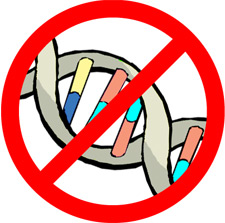Home | Glossary | Resources | Help | Contact Us | Course Map
Archival Notice
This is an archive page that is no longer being updated. It may contain outdated information and links may no longer function as originally intended.
DNA is transferred to an item of evidence through the physical transfer of biological material such as blood or skin cells. Typically, biological material that is properly collected, packaged, and stored can successfully be tested for DNA many years after the commission of a crime. However, many factors impact the ability to obtain results including the type and amount of biological material transferred (i.e. "touch" DNA generally transfers less cells than fluids), exposure to environmental or other factors that can degrade DNA, and time between when the DNA was deposited and when it was tested.
For more information on factors affecting DNA analysis, see Module 3, Practical Issues Specific to DNA Evidence.
Additional Online Courses
- What Every First Responding Officer Should Know About DNA Evidence
- Collecting DNA Evidence at Property Crime Scenes
- DNA – A Prosecutor’s Practice Notebook
- Crime Scene and DNA Basics
- Laboratory Safety Programs
- DNA Amplification
- Population Genetics and Statistics
- Non-STR DNA Markers: SNPs, Y-STRs, LCN and mtDNA
- Firearms Examiner Training
- Forensic DNA Education for Law Enforcement Decisionmakers
- What Every Investigator and Evidence Technician Should Know About DNA Evidence
- Principles of Forensic DNA for Officers of the Court
- Law 101: Legal Guide for the Forensic Expert
- Laboratory Orientation and Testing of Body Fluids and Tissues
- DNA Extraction and Quantitation
- STR Data Analysis and Interpretation
- Communication Skills, Report Writing, and Courtroom Testimony
- Español for Law Enforcement
- Amplified DNA Product Separation for Forensic Analysts


